
What Causes Ingrown Toenails?
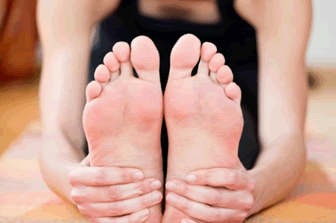 If you have ever experienced an ingrown toenail, you know how painful and how much of a hindrance it can be. It occurs when part of the toenail grows into the tissue of the toe. Medically known as onychocyrptosis, this disorder is typically caused by improper toenail clipping or wearing shoes that do not fit properly. With nearly 3 million cases of patients with ingrown toenails, it is important to contact your podiatrist to learn about proper treatment.
If you have ever experienced an ingrown toenail, you know how painful and how much of a hindrance it can be. It occurs when part of the toenail grows into the tissue of the toe. Medically known as onychocyrptosis, this disorder is typically caused by improper toenail clipping or wearing shoes that do not fit properly. With nearly 3 million cases of patients with ingrown toenails, it is important to contact your podiatrist to learn about proper treatment.
Ingrown toenails can become painful if they are not treated properly. For more information about ingrown toenails, contact Dr. Jordan Rachlin of Monroe Foot Care. Our doctor will answer any of your foot- and ankle-related questions.
Ingrown Toenails
Ingrown toenails occur when a toenail grows sideways into the bed of the nail, causing pain, swelling, and possibly infection.
Causes
Bacterial infections
Improper nail cutting such as cutting it too short or not straight across
Trauma to the toe, such as stubbing, which causes the nail to grow back irregularly
Ill-fitting shoes that bunch the toes too close together
Genetic predisposition
Prevention
Because ingrown toenails are not something found outside of shoe-wearing cultures, going barefoot as often as possible will decrease the likeliness of developing ingrown toenails. Wearing proper fitting shoes and using proper cutting techniques will also help decrease your risk of developing ingrown toenails.
Treatment
Ingrown toenails are a very treatable foot condition. In minor cases, soaking the affected area in salt or antibacterial soaps will not only help with the ingrown nail itself, but also help prevent any infections from occurring. In more severe cases, surgery is an option. In either case, speaking to your podiatrist about this condition will help you get a better understanding of specific treatment options that are right for you.
If you have any questions please feel free to contact our office located in Monroe, NY. We offer the newest diagnostic and treatment technologies for all your foot and ankle needs.
Anthony Davis Suffers Sprained Ankle
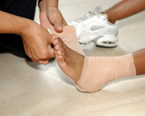 New Orleans Pelicans Anthony Davis suffered a Grade 2 ankle sprain in the preseason game against the Houston Rockets in Beijing. Davis had to retreat to the locker room and did not return to the game following a scuffle with Rockets center Nene while moving toward the basket. He was spotted wearing a boot on his sprained foot and was expected to be out for up to 15 days.
New Orleans Pelicans Anthony Davis suffered a Grade 2 ankle sprain in the preseason game against the Houston Rockets in Beijing. Davis had to retreat to the locker room and did not return to the game following a scuffle with Rockets center Nene while moving toward the basket. He was spotted wearing a boot on his sprained foot and was expected to be out for up to 15 days.
Ankle sprains are common, but need immediate attention. If you need your feet checked, contact Dr. Jordan Rachlin of Monroe Foot Care. Our doctor can provide the care you need to keep you pain-free and on your feet.
How Does an Ankle Sprain Occur?
Ankle sprains take place when the ligaments in your ankle are torn or stretched beyond their limits. There are multiple ways that the ankle can become injured, including twisting or rolling over onto your ankle, putting undue stress on it, or causing trauma to the ankle itself.
What are the Symptoms?
● Mild to moderate bruising
● Limited mobility
● Swelling
● Discoloration of the skin (depending on severity)
Preventing a Sprain
● Wearing appropriate shoes for the occasion
● Stretching before exercises and sports
● Knowing your limits can aid in prevention
Treatment of a Sprain
Treatment of a sprain depends on the severity. Many times, people are told to rest and remain off their feet completely, while others are given an air cast. If the sprain is very severe, surgery may be required.
If you have suffered an ankle sprain previously, you may want to consider additional support such as a brace and regular exercises to strengthen the ankle.
If you have any questions please feel free to contact one of our offices located in Monroe, NY. We offer the newest diagnostic and treatment technologies for all your foot and ankle needs.
Ben Simmons Breaks Ankle
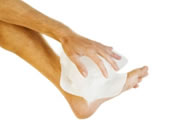 Lewis Toshney, who started the season at right back for United, hobbled off the field after a 1-1 draw against the Hibs. He was immediately sent off to have an x-ray done of his ankle. It is suspected that he broke his ankle during the game; however, he needs to be examined in order for the claim to be certain. Nevertheless, manager Ray McKinnon stated that “it looked like terrible news for the former Raith Rovers and Dundee man.”
Lewis Toshney, who started the season at right back for United, hobbled off the field after a 1-1 draw against the Hibs. He was immediately sent off to have an x-ray done of his ankle. It is suspected that he broke his ankle during the game; however, he needs to be examined in order for the claim to be certain. Nevertheless, manager Ray McKinnon stated that “it looked like terrible news for the former Raith Rovers and Dundee man.”
Broken ankles need immediate treatment. If you are seeking treatment, contact Dr. Jordan Rachlin of Monroe Foot Care. Our doctor can provide the care you need to keep you pain-free and on your feet.
Broken Ankles
A broken ankle is experienced when a person fractures their tibia or fibula in the lower leg and ankle area. Both of these bones are attached at the bottom of the leg and combine to form what we know to be our ankle.
When a physician is referring to a break of the ankle, he or she is usually referring to a break in the area where the tibia and fibula are joined to create our ankle joint. Ankles are more prone to fractures because the ankle is an area that suffers a lot of pressure and stress. There are some obvious signs when a person experiences a fractured ankle, and the following symptoms may be present.
Symptoms of a Fractured Ankle
● Excessive pain when the area is touched or when any pressure is placed on the ankle
● Swelling around the area
● Bruising of the area
● Area appears to be deformed
If you suspect an ankle fracture, it is recommended to seek treatment as soon as possible. The sooner you have your podiatrist diagnose the fracture, the quicker you’ll be on the way towards recovery.
If you have any questions please feel free to contact our office located in Monroe, NY. We offer the newest diagnostic and treatment technologies for all your foot and ankle needs.
Athlete’s Foot Can Lead to Odor
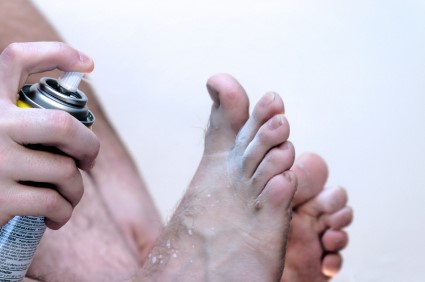 Odor emanates from people’s feet due to sweat or a lack of good hygiene practices and infections such as athlete’s foot. Bacteria can form as a result of either of these two reasons, and it may produce a strong odor. They tend to form around areas that are moist on your feet, and they feed on skin oils and dead cells. When bacteria thrive, they eliminate waste in the form of organic acids, which causes feet to smell. In order to keep your feet bacteria and infection free, you should change your socks daily, keep your toenails clipped and clean, dry feet thoroughly after showering, and swab in between your toes with rubbing alcohol.
Odor emanates from people’s feet due to sweat or a lack of good hygiene practices and infections such as athlete’s foot. Bacteria can form as a result of either of these two reasons, and it may produce a strong odor. They tend to form around areas that are moist on your feet, and they feed on skin oils and dead cells. When bacteria thrive, they eliminate waste in the form of organic acids, which causes feet to smell. In order to keep your feet bacteria and infection free, you should change your socks daily, keep your toenails clipped and clean, dry feet thoroughly after showering, and swab in between your toes with rubbing alcohol.
Athlete’s foot is an inconvenient condition that can be easily reduced with the proper treatment. If you have any concerns about your feet and ankles, contact Dr. Jordan Rachlin of Monroe Foot Care. Our doctor can provide the care you need to keep your pain free and on your feet.
Athlete’s Foot: The Sole Story
Athlete's foot, also known as tinea pedis, can be an extremely contagious foot infection. It is commonly contracted in public changing areas and bathrooms, dormitory style living quarters, around locker rooms and public swimming pools, or anywhere your feet often come into contact with other people.
Solutions to Combat Athlete’s Foot
· Hydrate your feet by using lotion
· Exfoliate
· Buff off nails
· Use of anti-fungal products
· Examine your feet and visit your doctor if any suspicious blisters or cuts develop
Athlete’s foot can cause many irritating symptoms such as dry and flaking skin, itching, and redness. Some more severe symptoms can include bleeding and cracked skin, intense itching and burning and even pain when walking. In the worst cases, athlete’s foot can cause blistering as well. Speak to your podiatrist for a better understanding of the different causes of athlete’s foot, as well as helping you figure out which treatment options are best for you.
If you have any questions, please feel free to contact our office located in Monroe, NY. We offer the newest diagnostic tools and technologies to treat your foot and ankle needs.
Managing Your Morton’s Neuroma
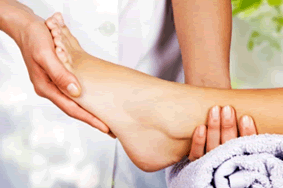 If you’re experiencing pain in the sole of your foot, under the balls of your toes, you may have Morton’s neuroma. The condition occurs when the nerve between your toes in the sole of your feet becomes inflamed, thickening in response. Morton’s neuroma seems to most commonly affect women who are middle-aged and those who wear high-heeled shoes, leading to extra pressure exerted on the balls of the feet. Preventing pain from Morton’s neuroma involves wearing wider shoes with no heels. Treatment for the condition involves steroid injections and surgery, as a last option.
If you’re experiencing pain in the sole of your foot, under the balls of your toes, you may have Morton’s neuroma. The condition occurs when the nerve between your toes in the sole of your feet becomes inflamed, thickening in response. Morton’s neuroma seems to most commonly affect women who are middle-aged and those who wear high-heeled shoes, leading to extra pressure exerted on the balls of the feet. Preventing pain from Morton’s neuroma involves wearing wider shoes with no heels. Treatment for the condition involves steroid injections and surgery, as a last option.
Morton’s Neuroma is a very uncomfortable condition to live with. If you think you have Morton’s neuroma contact Dr. Jordan Rachlin of Monroe Foot Care. Our doctor can provide the care you need to keep your pain free and on your feet.
Morton’s Neuroma
Morton's neuroma is a painful foot condition that commonly affects the areas between the second and third or third and fourth toe, although other areas of the foot are also susceptible. Morton’s neuroma is caused by an inflamed nerve in the foot that is being squeezed and aggravated by surrounding bones.
What Increases the Chances of having Morton’s Neuroma?
· -Ill-fitting high heels or shoes that add pressure to the toe or foot
· -Jogging, running or any sport that involves constant impact to the foot
· -Flat feet, bunions, and any other foot deformities
Morton’s neuroma is a very treatable condition. Orthotics and shoe inserts can often be used to alleviate the pain on the forefront of the feet. In more severe cases, corticosteroids can also be prescribed. In order to figure out the best treatment for your neuroma, it’s recommended to seek the care of a podiatrist who can diagnose your condition and provide different treatment options.
If you have any questions, please feel free to contact our office located in Monroe, NY. We offer the newest diagnostic tools and technologies to treat your foot and ankle needs.
What Are Soft Corns?
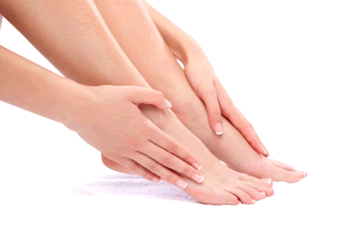 The soft corn, known as “one of the most painful types of corn[s],” is “located on the foot between the fourth and fifth toes.” Also called the interdigital corn, the condition occurs when there is too much friction occurring between the toe bones of the fourth and fifth toes. A soft corn forms in response, and can be made worse by improper footwear. Those who are obese or suffer from foot conditions are also prone to developing soft corns. Treating your corns involves seeing your podiatrist, who will remove the skin surgically.
The soft corn, known as “one of the most painful types of corn[s],” is “located on the foot between the fourth and fifth toes.” Also called the interdigital corn, the condition occurs when there is too much friction occurring between the toe bones of the fourth and fifth toes. A soft corn forms in response, and can be made worse by improper footwear. Those who are obese or suffer from foot conditions are also prone to developing soft corns. Treating your corns involves seeing your podiatrist, who will remove the skin surgically.
If you have any concerns regarding your feet and ankles, contact Dr. Jordan Rachlin of Monroe Foot Care. Our doctor can provide the podiatric treatment you seek.
Corns: What are they? And how do you get rid of them?
Corns can be described as areas of the skin that have thickened to the point of becoming painful or irritating. They are often layers and layers of the skin that have become dry and rough, and are normally smaller than calluses.
Ways to Prevent Corns
There are many ways to get rid of painful corns such as wearing:
- Well-fitting socks
- Comfortable shoes that are not tight around your foot
- Shoes that offer support
Treating Corns
Treatment of corns involves removing the dead skin that has built up in the specific area of the foot. Salicylic acid can help in getting rid of these corns because it dissolves keratin, which is the protein that makes up a good majority of corns. Podiatrists recommend that people with diabetes not use salicylic acid but should consult with their podiatrist regarding the treatment of corns.
If you have any questions please feel free to contact one of our offices located in Monroe, NY. We offer the newest diagnostic and treatment technologies for all your foot and ankle needs.
How to Treat Ingrown Toenails
 Ingrown toenails can be extremely uncomfortable for those who have them. They are caused when the edge of the toenail begins to grow downward into the skin surrounding it. Ingrown toenails are most commonly found in teenagers and the elderly. The reason why they are usually found in teens is because of sweat. Sweat causes the skin to swell and become and moist, which causes it to split. This allows for an ingrown toenail to occur. They are also common in the elderly because their nails are thick and hard. The thickness and hardness of their nails makes them harder to cut and causes pressure on the surrounding skin.
Ingrown toenails can be extremely uncomfortable for those who have them. They are caused when the edge of the toenail begins to grow downward into the skin surrounding it. Ingrown toenails are most commonly found in teenagers and the elderly. The reason why they are usually found in teens is because of sweat. Sweat causes the skin to swell and become and moist, which causes it to split. This allows for an ingrown toenail to occur. They are also common in the elderly because their nails are thick and hard. The thickness and hardness of their nails makes them harder to cut and causes pressure on the surrounding skin.
Ingrown toenails can become painful if they are not treated properly. For more information about ingrown toenails, contact Dr. Jordan Rachlin of Monroe Foot Care. Our doctor will answer any of your foot- and ankle-related questions.
Ingrown Toenails
Ingrown toenails occur when a toenail grows sideways into the bed of the nail, causing pain, swelling, and possibly infection.
Causes
Bacterial infections
Improper nail cutting such as cutting it too short or not straight across
Trauma to the toe, such as stubbing, which causes the nail to grow back irregularly
Ill-fitting shoes that bunch the toes too close together
Genetic predisposition
Prevention
Because ingrown toenails are not something found outside of shoe-wearing cultures, going barefoot as often as possible will decrease the likeliness of developing ingrown toenails. Wearing proper fitting shoes and using proper cutting techniques will also help decrease your risk of developing ingrown toenails.
Treatment
Ingrown toenails are a very treatable foot condition. In minor cases, soaking the affected area in salt or antibacterial soaps will not only help with the ingrown nail itself, but also help prevent any infections from occurring. In more severe cases, surgery is an option. In either case, speaking to your podiatrist about this condition will help you get a better understanding of specific treatment options that are right for you.
If you have any questions please feel free to contact one of our offices located in Monroe, NY. We offer the newest diagnostic and treatment technologies for all your foot and ankle needs.
Lowrie Has Bunion Removal Surgery
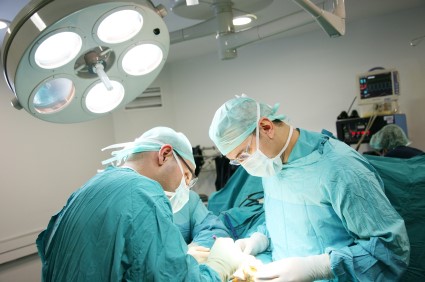 Jed Lowrie of the Oakland Athletics underwent surgery to remove his bunion and repair his left foot ligament, putting him out for the rest of the season. Lowrie had been sidelined for a few weeks and had been seeing doctors to determine if he would need surgery. “I began feeling symptoms about a month ago,” Lowrie said. “I took a swing and felt a pop. I’ve just been trying to manage it ever since then.”
Jed Lowrie of the Oakland Athletics underwent surgery to remove his bunion and repair his left foot ligament, putting him out for the rest of the season. Lowrie had been sidelined for a few weeks and had been seeing doctors to determine if he would need surgery. “I began feeling symptoms about a month ago,” Lowrie said. “I took a swing and felt a pop. I’ve just been trying to manage it ever since then.”
Foot surgery is sometimes necessary to fix a foot ailment. To learn more, contact Dr. Jordan Rachlin of Monroe Foot Care. Our doctor can provide the care you need to keep you pain-free and on your feet.
When Is Surgery Necessary?
Foot and ankle surgery is generally reserved for cases in which less invasive, conservative procedures have failed to help with the problem. Some of the cases in which surgery may be necessary are:
● Removing foot deformities like bone spurs and bunions
● Severe arthritis that has caused bone issues
● Cosmetic reconstruction
What Types of Surgery Are There?
The type of surgery you receive will depend on the nature of the problem you have. Some of the possible surgeries include:
● Bunionectomy for painful bunions
● Surgical fusion for realignment of bones
● Neuropathy decompression surgery to treat nerve damage
Benefits of Surgery
Although surgery is usually a last resort, it can provide more complete pain relief compared to non-surgical methods and may allow you to finally resume full activity.
Surgical techniques have also become increasingly sophisticated. Techniques like endoscopic surgery allow for smaller incisions and faster recovery times.
If you have any questions please feel free to contact our office located in Monroe, NY. We offer the newest diagnostic and treatment technologies for all your foot and ankle needs.
All About Plantar Fasciitis
 Plantar fasciitis is the most common foot condition that patients go to a podiatrist to seek help for. Plantar fasciitis occurs when the ligament in the arch of the foot becomes inflamed; this is usually caused by overuse. Many people who struggle with the condition are able to treat it with ease. There are over-the-counter solutions geared toward treating people with plantar fasciitis. Some of these solutions include arch supports and anti-inflammatory medications.
Plantar fasciitis is the most common foot condition that patients go to a podiatrist to seek help for. Plantar fasciitis occurs when the ligament in the arch of the foot becomes inflamed; this is usually caused by overuse. Many people who struggle with the condition are able to treat it with ease. There are over-the-counter solutions geared toward treating people with plantar fasciitis. Some of these solutions include arch supports and anti-inflammatory medications.
Plantar fasciitis can be very painful and inconvenient. If you are experiencing heel pain or symptoms of plantar fasciitis, contact Dr. Jordan Rachlin of Monroe Foot Care. Our doctor can provide the care you need to keep your pain free and on your feet.
What is Plantar Fasciitis?
Plantar fasciitis is the inflammation of the thick band of tissue that runs along the bottom of your foot, known as the plantar fascia, and causes mild to severe heel pain.
What Causes Plantar Fasciitis?
· Excessive running
· Non-supportive shoes
· Overpronation
· Repeated stretching and tearing of the plantar fascia
How Can It Be Treated?
· Conservative measures – anti-inflammatories, ice packs, stretching exercises, physical therapy, orthotic devices
· Shockwave therapy – sound waves are sent to the affected area to facilitate healing and are usually used for chronic cases of plantar fasciitis
· Surgery – usually only used as a last resort when all else fails. The plantar fascia can be surgically detached from the heel
While very treatable, plantar fasciitis is definitely not something that should be ignored. Especially in severe cases, speaking to your doctor right away is highly recommended to avoid complications and severe heel pain. Your podiatrist can work with you to provide the appropriate treatment options tailored to your condition.
If you have any questions please feel free to contact our office located in Monroe, NY. We offer the newest diagnostic and treatment technologies for all your foot and ankle needs.
Traditional Shoes for Women are also Bad for Feet
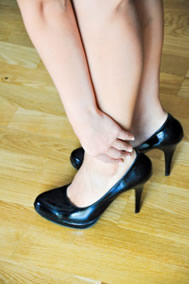 Women are starting to choose shoes that they can easily walk in. Shoe brands that are known for making comfortable shoes are starting to upgrade their designs in order to make their shoes fashionable as well. Some podiatrists are also working to create shoes that are not only comfortable, but fashionable too. Dr. Joan Oloff is a Californian podiatrist who is bothered by the fact that traditional women’s shoes are bad for the feet. She has worked to minimize the angle of the foot inside the shoe.
Women are starting to choose shoes that they can easily walk in. Shoe brands that are known for making comfortable shoes are starting to upgrade their designs in order to make their shoes fashionable as well. Some podiatrists are also working to create shoes that are not only comfortable, but fashionable too. Dr. Joan Oloff is a Californian podiatrist who is bothered by the fact that traditional women’s shoes are bad for the feet. She has worked to minimize the angle of the foot inside the shoe.
High heels have a history for causing foot and ankle problems. If you have any concerns about your feet or ankles, contact Dr. Jordan Rachlin of Monroe Foot Care. Our doctor can provide the care you need to keep your pain free and on your feet.
Effects of High Heels on the Feet
High heels are popular shoes among women because their style and societal appeal. Despite this, they can still cause many health problems if worn too frequently.
What parts my body will be affected by high heels?
Ankle Joints
Achilles Tendon – may shorten and stiffen with prolonged wear
Balls of the Feet
Knees – heels cause the knees to bend constantly, creating stress on them
Back – they decrease the spine’s ability to absorb shock, which may lead to back pain. Also, the vertebrae of the lower back may compress.
What kinds of foot problems can develop from wearing high heels?
Corns
Calluses
Hammertoe
Bunions
Morton’s Neuroma
Plantar Fasciitis
How can I still wear high heels and maintain foot health?
If you want to wear high heeled shoes, make sure that you are not wearing them every day, as this will help prevent long term physical problems. Try wearing thicker heels as opposed to stilettos to distribute weight more evenly across the feet. Always make sure you are wearing the proper shoes for the right occasion, such as sneakers for exercising. If you walk to work, try carrying your heels with you and changing into them once you arrive at work. Adding inserts to your heels can help cushion your feet and absorb shock. Full foot inserts or metatarsal pads are available.
If you have any questions please feel free to contact one of our offices located in Monroe, NY. We offer the newest diagnostic and treatment technologies for all your foot and ankle needs.
More...
Feet Tips for Diabetics
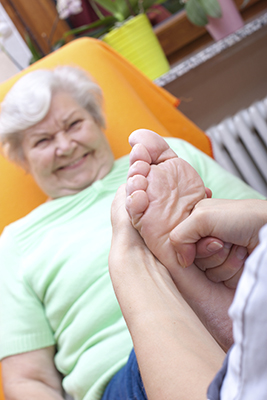 Foot complications are common among people with diabetes. However, there are ways for diabetics to prevent foot problems in the future. It is important for people with diabetes to wear shoes that fit properly. Tight fitting shoes are one of the most common causes of diabetic foot problems. Another tip to avoid foot complications is to keep your feet clean. Diabetics should carefully wash their feet daily with mild soap and water. Lastly, people with diabetes should inspect their feet on a daily basis.
Foot complications are common among people with diabetes. However, there are ways for diabetics to prevent foot problems in the future. It is important for people with diabetes to wear shoes that fit properly. Tight fitting shoes are one of the most common causes of diabetic foot problems. Another tip to avoid foot complications is to keep your feet clean. Diabetics should carefully wash their feet daily with mild soap and water. Lastly, people with diabetes should inspect their feet on a daily basis.
Diabetic foot care is important in preventing foot ailments such as ulcers. If you are suffering from diabetes or have any other concerns about your feet contact Dr. Jordan Rachlin of New York. Our doctor can provide the care you need to keep your pain free and on your feet.
Diabetic Foot Care
Diabetes affects millions of people every year. Diabetes can damage blood vessels in many parts of the body, including the feet. Because of this, taking care of your feet is essential if you have diabetes, and having a podiatrist help monitor your foot health is highly recommended.
The Importance of Caring for Your Feet
● Routinely inspect your feet for bruises or sores.
● Wear socks that fit your feet comfortably.
● Wear comfortable shoes that provide adequate support.
Patients with diabetes should have their doctor monitor their blood levels because blood sugar levels play such a huge role in diabetic care. Monitoring these levels on a regular basis is highly advised.
It is always best to inform your healthcare professional of any concerns you may have regarding your feet, especially for diabetic patients. Early treatment and routine foot examinations are keys to maintaining proper health, especially because severe complications can arise if proper treatment is not applied.
If you have any questions please feel free to contact one of our offices located in Monroe, NY the newest diagnostic and treatment technologies for all your foot and ankle needs.
How to Get Rid of Bunions
 Hallux valgus, which is more commonly known as a bunion, is a deformity of the joint at the base of the big toe. Most people who have bunions develop them from wearing uncomfortable shoes for a long period of time. Women are more likely to have bunions compared to men because they often wear high heels. Bunions are not a life threatening condition; however they can negatively impact one’s quality of life. There are a few non-surgical options for those wishing to treat their bunions. Physiotherapy and the use of devices such as bunion splints and toe spacers can work to alleviate bunion pain; however they may not be effective in the long run.
Hallux valgus, which is more commonly known as a bunion, is a deformity of the joint at the base of the big toe. Most people who have bunions develop them from wearing uncomfortable shoes for a long period of time. Women are more likely to have bunions compared to men because they often wear high heels. Bunions are not a life threatening condition; however they can negatively impact one’s quality of life. There are a few non-surgical options for those wishing to treat their bunions. Physiotherapy and the use of devices such as bunion splints and toe spacers can work to alleviate bunion pain; however they may not be effective in the long run. Bunion surgery usually occurs after non-surgical methods have proved to be ineffective. If you have any concerns, contact Dr. Jordan Rachlin of New York. Our doctor will assess your injury and provide you with quality treatment.
What is a Bunion?
A bunion is formed of swollen tissue or an enlargement of boney growth, usually located at the base joint of the toe that connects to the foot. The swelling occurs by the bones in the big toe shifting inward, which impacts the other toes of the foot. This causes the area around the base of the big toe to become inflamed and painful.
Why do Bunions Form?
· Genetics – susceptibility to bunions are often hereditary
· Stress on the feet – poorly fitted and uncomfortable footwear that places stress on feet, such as heels, can cause bunions to form
How are Bunions Diagnosed?
Doctors often perform two tests – blood tests and x-rays – when trying to diagnose bunions, especially in the early stages of development. Blood tests help determine if the foot pain is being caused by something else, such as arthritis, while x-rays provide a clear picture of your bone structure to your doctor.
How are Bunions Treated?
· Refrain from wearing heels or similar shoes that cause discomfort
· Select wider shoes that can provide more comfort and reduce pain
· Anti-inflammatory and pain management drugs
· Orthotics or foot inserts
· Surgery
If you have any questions, please feel free to contact our office located in Monroe, NY. We offer the newest diagnostic and treatment technologies for all your foot care needs.
Read more about bunions.
Caring for Blisters
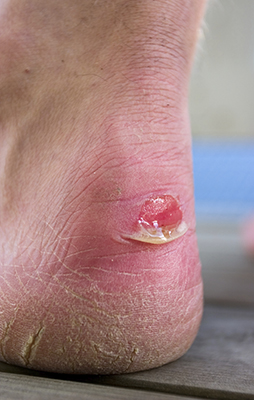 Blisters are a fairly common foot condition that can be easily prevented with a few simple steps. The first step is to always ensure the feet or kept clean to prevent any germs or bacteria from penetrating the skin. Wearing the right pair of socks can also help support the feet and reduce friction, which can create blisters. Applying bandages or band aids to any already existing blisters can help reduce excess heat or additional friction that can exacerbate the blister.
Blisters are a fairly common foot condition that can be easily prevented with a few simple steps. The first step is to always ensure the feet or kept clean to prevent any germs or bacteria from penetrating the skin. Wearing the right pair of socks can also help support the feet and reduce friction, which can create blisters. Applying bandages or band aids to any already existing blisters can help reduce excess heat or additional friction that can exacerbate the blister.Blisters are prone to making everyday activities extremely uncomfortable. If your feet are hurting, contact Dr. Jordan Rachlin of New York. Our doctor will assist you with all of your podiatric concerns.
Foot Blisters
Foot blisters develop as a result of constantly wearing tight or ill-fitting footwear. This happens due to the constant rubbing from the shoe, which can often lead to pain.
What are Foot Blisters?
A foot blister is a small fluid-filled pocket that forms on the upper-most layer of the skin. Blisters are filled with clear fluid and can lead to blood drainage or pus if the area becomes infected.
How do Blisters Form?
Blisters on the feet are often the result of constant friction of skin and material, usually by shoe rubbing. Walking in sandals, boots, or shoes that don’t fit properly for long periods of time can result in a blister. Having consistent foot moisture and humidity can easily lead to blister formation.
Prevention & Treatment
It is important to properly care for the affected area in order to prevent infection and ease the pain. Do not lance the blister and use a Band-Aid to provide pain relief. Also, be sure to keep your feet dry and wear proper fitting shoes. If you see blood or pus in a blister, seek assistance from a podiatrist.
If you have any questions please contact our offices located in Monroe, NY. We offer the newest diagnostic and treatment technologies for all your foot and ankle needs.
Read more about blisters on the feet
Take Care of the Feet for Flip-flop Season
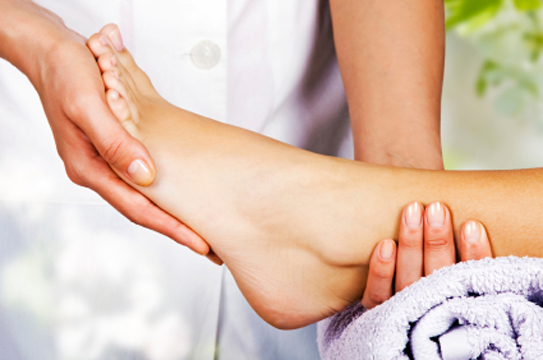 There are different ways that you can take care of your feet each day in preparation for summer and flip-flop season. Foot filing is a good way to remove dry, cracked skin, and give you feet that are soft and supple. Wearing insoles is also an efficient way to maintain healthy feet. Insoles not only provide comfort, but they provide support for your feet as well. Corns are the result of friction and pressure caused by footwear, however insoles can help prevent corn formation. An easy way to prevent fungal infections is to make sure your feet are completely dry. Fungal infections occur when your feet are wet or moist from either water or sweat.
There are different ways that you can take care of your feet each day in preparation for summer and flip-flop season. Foot filing is a good way to remove dry, cracked skin, and give you feet that are soft and supple. Wearing insoles is also an efficient way to maintain healthy feet. Insoles not only provide comfort, but they provide support for your feet as well. Corns are the result of friction and pressure caused by footwear, however insoles can help prevent corn formation. An easy way to prevent fungal infections is to make sure your feet are completely dry. Fungal infections occur when your feet are wet or moist from either water or sweat.Every day foot care is very important to prevent infection and other foot ailments. If you need your feet checked, contact Dr. Jordan Rachlin of New York. Our doctor can provide the care you need to keep your pain free and on your feet.
Every Day Foot Care
Often, people take care of their bodies, face and hair more so than they do for their feet. But the feet are a very important aspect of our bodies, and one that we should pay more attention to. After all, without our feet, we would not be able to perform most daily tasks. It is best to check your feet regularly to make sure there are no new bruises or cuts that you may not have noticed before, for example.
For dry feet, moisturizer can easily be a remedy and can be applied as often as necessary to the affected areas. Wearing shoes that fit well can also help you maintain good foot health, as well as making it easier to walk and do daily activities without the stress or pain of ill-fitting shoes, high heels, or even flip flops.
Also, wearing clean socks with closed shoes is important to ensure that sweat and bacteria do not accumulate within the shoe. Clean socks help to prevent athlete’s foot, fungi problems, bad odors, and can absorb sweat.
If you have any questions, please feel free to contact our offices located in Monroe, NY. We offer the newest diagnostic and treatment technologies for all your foot care needs.
Read more about Everyday Foot Care
Location & Hours
1200 Rt 208 Suite 5
Monroe, NY 10950
Directions
Phone: (845) 782-4455
Fax: (800) 968-8601
Monday through Thursday - 8am to 6pm
Friday - 8am - 3pm
Services
Foot and Ankle Pain- Ingrown toenail care
- Sport Medicine
- Medical Grade Orthotics
- Trauma and Sprain Care
- Medical Pedicures
- Plantar Fascitis
- Achilles Tendonitis
- Broken Toe
Copyright © 2015 Monroe Foot Care | Site Map | Design by: Podiatry Content Connection
